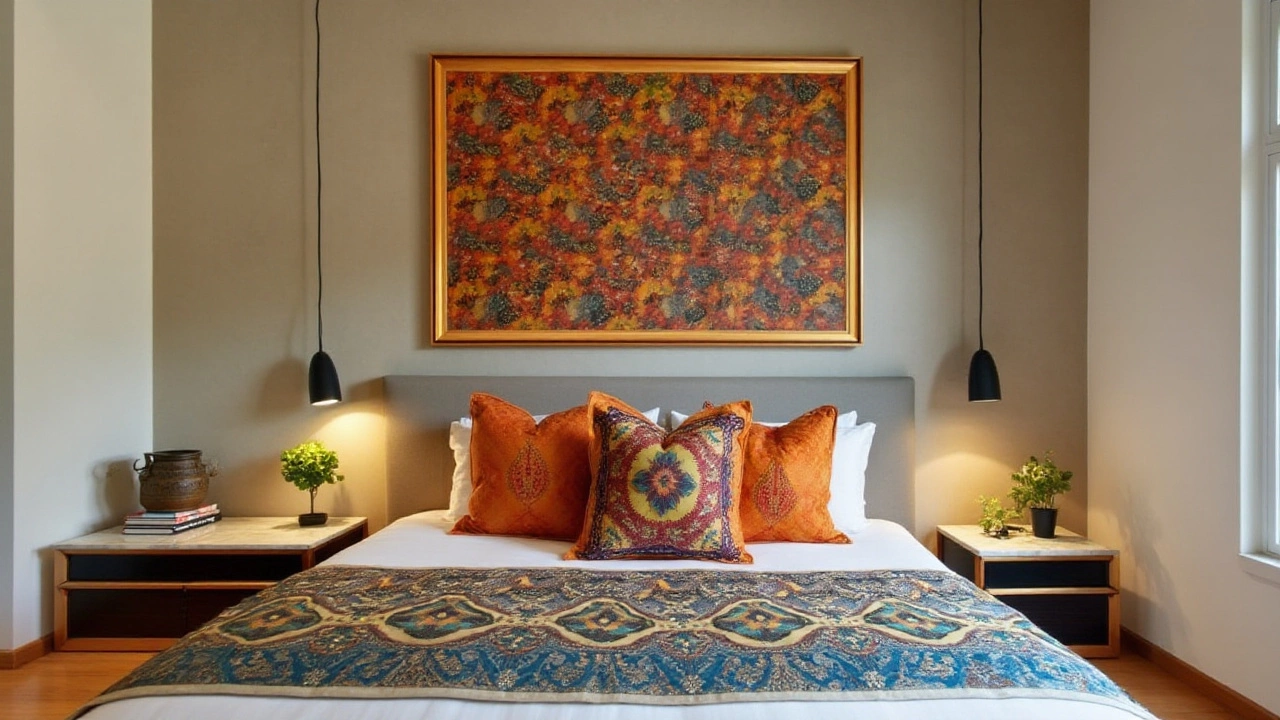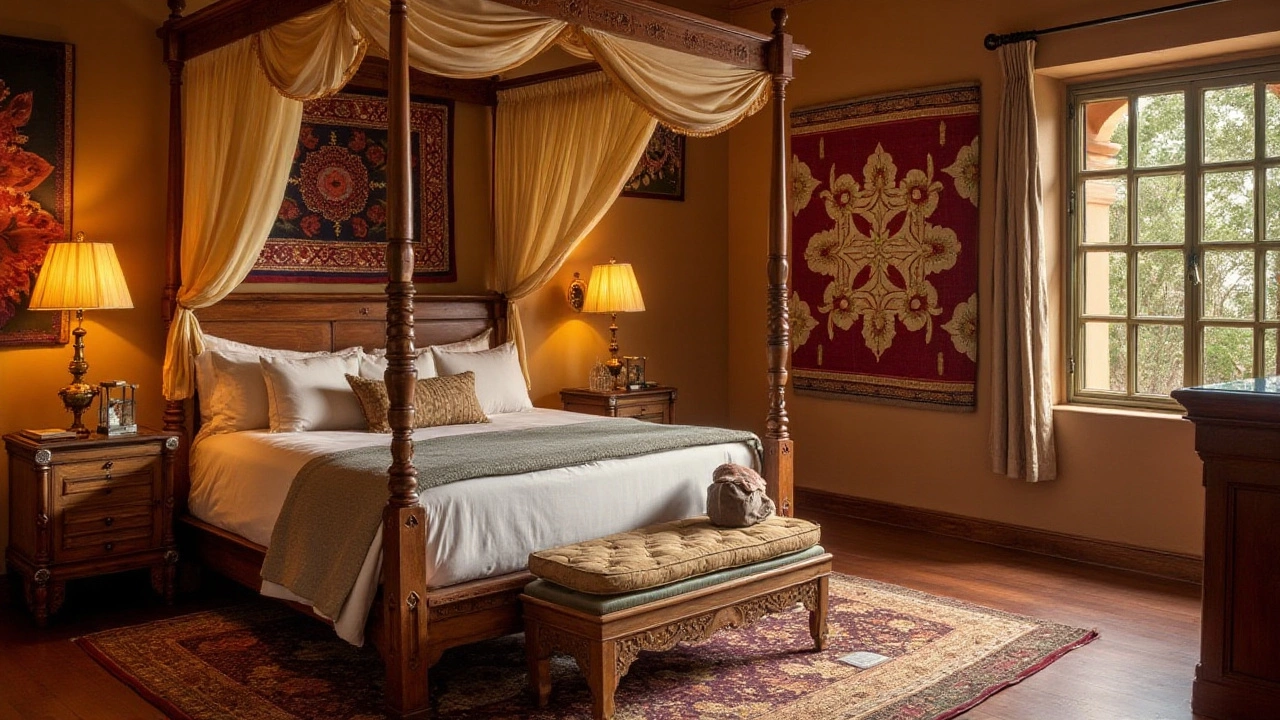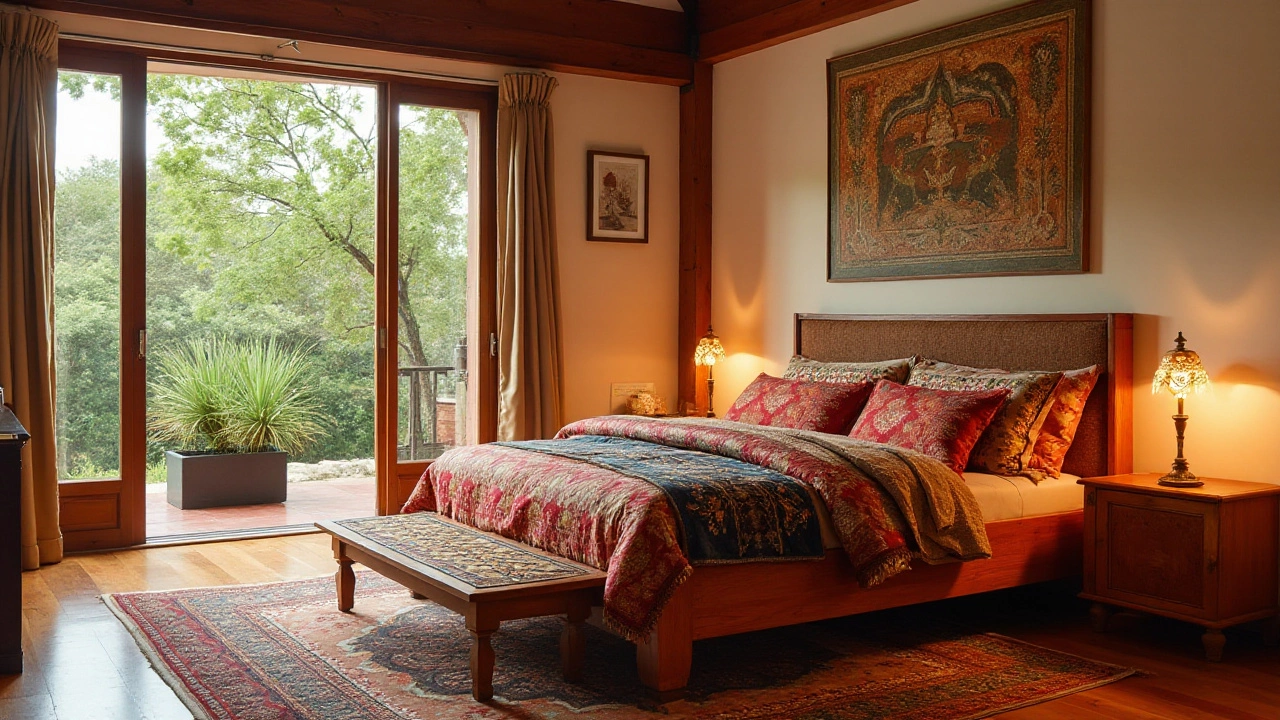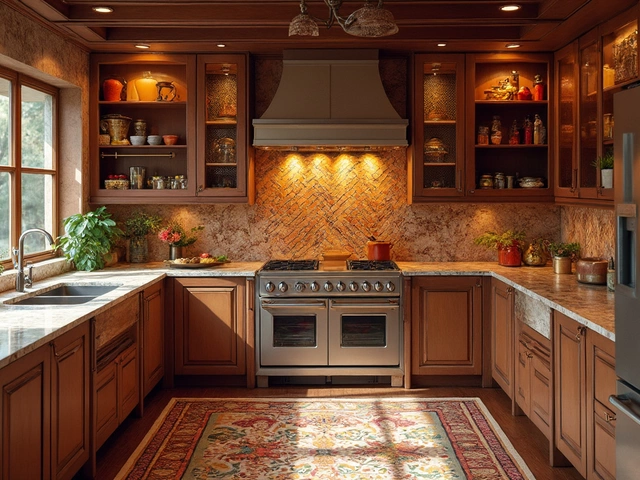Your bedroom isn't just a place for sleeping, it's your personal sanctuary. Every piece contributes to the ambiance, where comfort meets style. Selecting furniture wisely can make a huge difference in creating a space that speaks to you.
The bed is undoubtedly the centerpiece. With countless frame designs available, it's worth finding one that resonates with your style while offering practicality. From minimalist frames to lavish upholstered headboards, each choice sets the tone for your room.
Nightstands are another essential, often unsung heroes in bedroom design. They offer storage, support a lamp for reading, and provide a place for your bedtime essentials. Yet, more than mere function, a well-chosen nightstand complements your bed's style, adding to the overall aesthetics.
No bedroom feels complete without a dresser. Beyond storing your clothes, it serves as a surface for decorative items or a mirror. The right dresser balances form and function, enhancing the room's look without overwhelming it.
Wall art is the finishing touch that can elevate your bedroom's design from good to great. Whether you opt for bold canvases, serene landscapes, or abstract designs, art adds depth and personality. It's that pop of character that makes the space truly yours.
Blending your furniture with wall art requires a keen eye for balance and harmony. It's about ensuring the art and furniture complement rather than clash, creating a cohesive and inviting room. Thoughtful arrangements foster an environment that's not only functional but also aesthetically pleasing, turning your bedroom into a delightful retreat.
- Versatile Bed Frames
- Functional Nightstands
- Chic Dressers
- Choosing Stunning Wall Art
- Blending Furniture with Art
- Creating a Cohesive Look
Versatile Bed Frames
The bed frame is not just a functional piece in your bedroom; it's the anchor of your personal space, defining the style and atmosphere of your retreat. A well-chosen frame can elevate the design, while offering the comfort you deserve after a long day. When it comes to picking the right bed frame, versatility is key. This doesn't just mean finding a frame that matches various decor styles, but also one that meets practical needs such as storage or portability. The right frame can transform a simple sleeping area into a luxurious resting oasis.
Wooden frames have long been a staple in bedroom design, cherished for their durability and timeless appeal. From rustic pine to elegant oak, these frames come in a variety of finishes, each lending its unique warmth to a room. Metal bed frames, on the other hand, offer a sleek and modern look. They are lightweight, making them easy to move or adjust, and often feature intricate designs that can serve as a focal point in minimalist space. Did you know that adjustable bed frames have become increasingly popular recently? They allow for customizable sleeping positions, a boon for those who enjoy reading or watching TV in bed.
"A bed frame is more than just a structure; it's the canvas upon which you paint your most personal and restorative experiences." - Jane Wasserman, Interior Design Magazine
For small spaces, storage-friendly bed frames are a godsend. These frames often come with built-in drawers or shelves, allowing you to maximize the functionality of a smaller room. If you're living in an urban area where square footage is precious, a bed with under-bed storage can provide a home for extra bedding, clothing, or other personal items, ensuring your room remains clutter-free. Additionally, trundle beds are brilliant options for guest rooms or shared kids' rooms, offering an extra sleeping space that can be tucked away when not in use.
Choosing a bed frame isn't just about aesthetics or storage. It's also about finding what fits your lifestyle. Do you require a frame that accommodates a mattress designed with a specific feature, like memory foam or hybrid construction? Will the frame support additional features like a headboard or canopy? Each of these elements contributes to the frame's versatility, making it crucial to analyze your own needs and lifestyle when making a selection. Don't underestimate the role your bed frame plays; the right choice can offer much more than a place to lay your head – it can offer comfort, efficiency, and an extra layer of style.
As interior design continues to evolve, so do the styles and functionalities of bed frames. With sustainability becoming increasingly important, many designers are focusing on eco-friendly materials and production processes, offering consumers guilt-free options that don't sacrifice style for ethics. As you embark on the journey to find your perfect bed frame, consider not only aesthetic preferences but also practical needs. Reflect on personal habits and preferences and don't hesitate to test out various models or consult with interior designers for guidance. Selecting a versatile bed frame is a thoughtful step toward crafting a bedroom that serves as a comfortable and inviting haven.
Functional Nightstands
Nightstands play a crucial role in completing a bedroom's look and feel. Unlike other pieces of bedroom furniture, nightstands serve multiple practical purposes. They offer space for a lamp to illuminate your late-night reading, a spot to charge your phone overnight, and of course, a home for any favorite bedside essentials. One might say they are the unsung heroes of the bedroom. Whether it's a glass of water or the convenience of setting down a late-night snack, nightstands save you multiple trips out of bed. Interestingly, the concept of nightstands dates back to the 17th century, when they were initially designed with chamber pot storage in mind. This quaint historical tidbit shows just how far the design and function of nightstands have come!
The shape and style of your nightstand can significantly enhance the rest of your bedroom decor. When choosing a nightstand, consider the height of your bed to ensure the proportions are comfortable and aesthetically pleasing. The rule of thumb is to have the nightstand top align with the height of the mattress for optimal functionality and visual symmetry. Material-wise, options abound: from rustic wooden styles that offer a cozy feel, to sleek metal or mirror finishes that can modernize the room's look. Customization is key, and some nightstands offer adjustable heights or modular components, allowing for greater personalization.
Space and Storage
Storage is often the primary consideration with nightstands, and there are numerous designs to suit your requirements. Look for models with spacious drawers for hiding clutter or those with open shelves for stacking books and magazines. This is especially beneficial if your bedroom is compact and you’re short on space. Space-saving nightstands are a big trend right now; designs that include hidden compartments for chargers and cables can keep surfaces clutter-free while maintaining essential tech accessibility. Some innovative designs even incorporate wireless charging pads for devices or built-in speakers for a seamless entertainment experience. Bedroom furniture gets smarter every year!
Balance is essential when placing your nightstand in relation to your bed. Proper placement ensures that both accessibility and visual harmony are maintained. Depending on the room layout, sometimes twin nightstands on either side of the bed create a sense of balance. Other times, a single, larger unit does the trick in anchoring the space. As expert designer Nate Berkus wisely noted,
"Your home should tell the story of who you are, and be a collection of what you love."The paraphernalia that populates your nightstand acts as a very personal showcase of items that matter, from framed family photographs to a beloved book series. Make sure this space speaks to who you are.
A look at some statistics reveals growing trends in nightstand preferences. A 2023 home design survey found that 48% of homeowners prefer vintage wood over modern materials when selecting a nightstand, emphasizing the desire for warmth and nostalgia in bedroom decor. Meanwhile, 36% of those surveyed identified built-in charging capabilities as a crucial feature, pointing to our ever-growing reliance on technology. This underscores the synergy between design creativity and functional innovation driving current trends in home decor, particularly in smaller bedrooms where every inch counts.
Design and Aesthetic Considerations
Design elements such as color, texture, and finish all contribute to how the nightstand integrates with the rest of your bedroom. Whether in harmony or offering a beautiful contrast, color can bring about a powerful impact. Nightstands that match the material and finish of your bedroom furniture can offer a cohesive and polished look, while those with mixed materials can provide a trendy, eclectic vibe. Consider experimenting with textures like distressed wood or smooth lacquered surfaces to add visual interest. So much about nightstands is about marrying function with beauty, crafting an inviting bedroom space that is both practical and stylish. And as part of a coordinated ensemble, the right nightstand can impeccably complement your tailored design approach, leaving you with a masterpiece of comfort and elegance.

Chic Dressers
A dresser does more than hold your belongings; it is a linchpin of bedroom design. This piece must harmonize with the rest of your furniture, balancing aesthetics and utility. Dressers come in a plethora of designs, from sleek, modern lines to intricate antique styles. A chic dresser is often lauded for its ability to stand as a statement piece. It's not uncommon to find homeowners using it to set the tone or theme for the entire room. The right dresser strikes an elegant pose against the wall, its silhouette complementing your style whether it's country, contemporary, or industrial.
Consider the dresser's finish as well. High-gloss lacquers bring a touch of modern glam while distressed wood offers a rustic charm. Each finish tells a different story and evokes varied emotions. A bright lacquer may reflect light and cheer, whereas a deep, dark wood might bring warmth and comfort. Keep in mind the tactile experience too - smooth surfaces can feel polished and finished, while textured dressers may offer an organically raw appeal.
Functionality cannot be overlooked when selecting a dresser. Properly assess your storage needs: Do you require deeper drawers for chunky sweaters, or do shallower ones suffice? Some dressers come with varied drawer depths, catering to different storage requirements. Expert designer Nate Berkus once noted,
"A dresser should be like a good friend - reliable, sturdy, and full of character."His words echo a single truth: utility should align with your daily routines, transforming your bedroom storage into an unrushed, gratifying experience.
Chic dressers also serve as platforms atop which decor dreams come to life. Think framed photographs, chic lamps, or potted plants. Such items can be interchanged to fit seasons or tastes. The top of a dresser, often at eye level, becomes a stage for personality to shine. As a general tip, aim for a mix of heights and textures to keep the eye engaged. While matching sets have a timeless appeal, don't shy away from experimenting with different combinations to birth a fresh, bespoke look.
Space is yet another factor guiding the choice of a dresser. For those with airy, expansive bedrooms, a broad and low dresser fits beautifully. In compact spaces, taller, narrower options make for efficient use of vertical space. Good design acknowledges and respects the confines of its environment. Tailor your choice to the dimensions you're working within.
A look at recent trends suggests that multifunctional dressers are gaining traction. Some incorporate clever charging ports or convertible changing tables, catering to modern needs without compromising their traditional roles. Observing these evolutions in furniture design often paints a picture of changing lifestyles and living architectures. For a keen homeowner, an adaptive dresser offers not just storage solutions but anticipates future additions to functionality.
| Type | Finish | Function |
|---|---|---|
| Low & Broad | Matte Lacquer | Large Storage |
| Tall & Narrow | Distressed Wood | Vertical Space |
| Multifunctional | Glossy Finish | Modern Utility |
Navigating the world of dressers promises a rewarding interior journey. When selected with care, this bigger-than-it-looks piece augments the bedroom’s allure, all the while offering tangible utility. In the realm of furniture selection, perhaps nothing underscores style and function more eloquently than a chic dresser.
Choosing Stunning Wall Art
Wall art is the heart and soul of the bedroom, breathing life and character into the space like nothing else. When choosing art, it's crucial to understand that it's not just about filling empty walls; it's about adding layers to your personal narrative. Start by considering the color palette of your room. Art should complement the existing hues, either blending seamlessly or serving as a bold contrast. The key is to create harmony that aligns with the mood you want to cultivate. Think about how each piece resonates with you: is it energizing, calming, or thought-provoking? Art has the power to evoke emotion and set the tone for your bedroom.
Another important factor is the size and scale of your wall art. Large pieces can serve as focal points, drawing the eye and anchoring your design. Conversely, a series of small, well-curated pieces can create a gallery-like effect, perfect for injecting variety and interest. The right piece can redefine a space, giving it depth and texture that paint alone cannot. Placement plays a pivotal role as well. A common tip is to hang artwork at eye level, making sure it’s neither too high nor too low. This ensures your art is always in the spotlight, easy to appreciate and enjoy.
Always remember the type of artwork you select should reflect your style and interests, creating a personal connection to the space. Photographs bring realism and nostalgia; abstract art can introduce intrigue and mystery. Prints of famous paintings bring a classic touch, while contemporary pieces might offer a modern flair. Take time to explore different interior design styles to find what truly speaks to you.
“Art should comfort the disturbed and disturb the comfortable.” – Banksy
When integrating wall art with home decor, consider using frames or mats that tie in with your furniture finish for cohesion. This small detail can create a stunning united look. And don't shy away from experimenting with different media such as metal works, textiles, or sculpture, which can add a three-dimensional element to your walls.
Choosing the perfect wall art is a rewarding process that allows your bedroom to evolve into a true expression of yourself. With each piece, you add a unique touch that is both personal and delightful. Art is much more than decoration; it tells stories, ignites ideas, and enriches our surroundings in profound ways.

Blending Furniture with Art
The art of blending furniture with wall art strikes a balance that ties together the aesthetics of a bedroom. It's the bridge between functionality and artistry, weaving elements of taste and personality into a single, cohesive tapestry. When selecting bedroom furniture, consider the themes and motifs already present on your walls. Does your art feature bold, vibrant colors, or is it more muted and subtle? These choices will guide you in selecting pieces that harmonize with your chosen artwork. Experts often suggest that a unifying color theme or complementary patterns can help in achieving this seamless synchronization.
Placement and proportion are key in marrying wall art with furniture. Oversized pieces naturally draw more attention and can serve as focal points, anchoring the space. Pairing such dominant artworks with sleek, understated furniture keeps the attention on the art. Conversely, if your wall art is modest or part of a gallery wall, combining it with more distinct furniture styles can create an engaging visual dialogue. One approach is to echo elements or colors from your artwork within the design of your furniture, be it the etching on your dresser or the fabric of your bed frame.
Surprisingly, room lighting plays a crucial role in this design dance. Art and furniture should ideally speak to the light available, enhancing each other's appeal. Consider how natural light casts shadows or highlights certain features during different times of the day. This not only affects the mood of the room but can also accentuate architectural details within your furniture or dramatic strokes in your wall art. Designers often recommend investing in dimmers or strategically placed lamps to maintain control over these light dynamics.
Design guru Jonathan Adler once said, "A room should never allow the eye to settle in one place. It should smile at you and create fantasy." This resonates deeply in the art of balancing your bedroom's decor.
Furthermore, the material play between furniture and art adds another dimension of intrigue. Wood grains, metallics, and textiles can seamlessly integrate with the textures found in certain types of art, from paintings on canvas to framed prints. For example, a painting characterized by smooth gradients may pair well with furniture featuring polished wood or metal finishes, enhancing that sense of fluidity. Alternatively, artworks with rich, textured brushstrokes might find their counterpart in a plush-velvet armchair or a rough-hewn oak nightstand. This layer of texture not only enriches the room's tactility but also its visual depth.
An often-overlooked aspect of blending these two elements is the cultural or historical narrative they tell. Art enthusiasts often select pieces that reflect personal interests or cultural identity, which can extend to the furniture. Incorporating furniture pieces that have a story, whether due to their origin, design era, or craftsmanship, can create a space rich with personal meaning. For instance, combining a set of vivid, contemporary Aboriginal art prints with a statement mid-century modern bed frame can lend your bedroom both a conversational spark and an innate sense of your unique taste.
Finally, embrace the power of accessories to unite your bedroom's decor. Decorative pillows, throws, and even rugs can reflect the tones and textures found in your wall art, connecting the furnishings to your selected art pieces. It's a subtle art form, this layering of accessories, and one that can make or break the overall cohesion. Integrating these softer elements encourages a room to feel intentional yet lived-in, where each piece seems to belong to a thoughtfully constructed puzzle. By tuning into these nuanced relationships, you not only create a beautiful space but one that truly resonates with personality and warmth.
Creating a Cohesive Look
Bringing harmony to your bedroom begins with the judicious blending of furniture and wall art elements. A cohesive bedroom design doesn't happen by accident; it requires a thoughtful approach to ensure every space feels balanced and inviting. Start by selecting a theme or color palette that speaks to you. This is the foundation for making informed choices about each item you introduce into the room. By creating a visual link between the furniture and wall art, you craft a harmonious flow that ties the entire room together.
One effective way to achieve this is through color coordination. For instance, if your bedroom furniture features cool tones like blues or grays, consider incorporating wall art that echoes these colors. This doesn't mean every piece should match exactly, but there should be a visual dialogue between them. Patterns are another avenue for creating cohesion. Maybe your dresser has a subtle geometric pattern, and you pick wall art that mirrors this motif. Such connections serve as visual anchors that ground the design.
"Your home should tell the story of who you are, and be a collection of what you love," says Nate Berkus, celebrated interior designer.
The layout of your furniture and decor also plays a crucial role. Strive for balance, where no section of the room feels heavy or cluttered. This can be achieved by spacing furniture evenly and ensuring there is breathing space between large items. Within this layout, your wall art can provide focal points that draw the eye, creating interest without overwhelming.
Lighting profoundly impacts the perception of cohesion in a room. Consider ambient, task, and accent lighting when designing your bedroom. Soft ambient lighting can make all the elements come together beautifully. Task lighting, such as bedside lamps, can highlight specific pieces of wall art, providing depth and dimension. Accent lighting can be used strategically to create pathways of light that guide the eye across the room. A well-lit room accentuates the details of both furniture and decor, enhancing the overall aesthetic.
Textures are another important consideration. Mixing materials like wood, metal, fabric, and glass in your furnitures such as nightstands or headboards provide a rich tapestry of textures that, when matched with complementary wall art textures, add depth and interest. The combination of a plush upholstered bed with a metal-framed piece of art can lend a sophisticated and textured feel to your space.
| Element | Potential Impact |
|---|---|
| Color Palette | Establishes a unified theme |
| Lighting | Enhances ambiance and adds depth |
By considering these elements of color, pattern, layout, and lighting, you can create a bedroom that feels not only like a place to rest but also a curated space that reflects your taste and personality. It's a space where every aspect speaks the same design language, resulting in a cohesive and delightful retreat.





